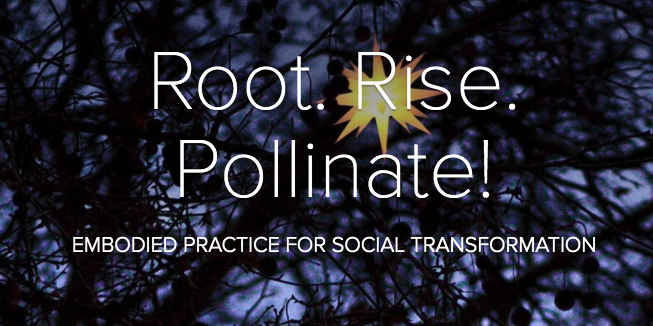What happened when we made space for harvest
As the pandemic(s) continue, and in the midst of the great resignation, global unrest, and the unfolding of the anthropocene, we are still here. Like so many of you, we are still working. Still worldbuilding.
And like so many of you, we’ve been doing this work alongside colleagues we haven’t hugged in years. Some of whom we’ve never even met in real life.
We’re doing our best to build connection and humanity through Zoom screens, phone calls, emails, and DMs. All the while, doing our best to support one another through the urgencies of life — elder care, child care, health emergencies, grief, and loss. And celebrating the beautiful moments too — life milestones, celebrations, small and big joys.
Last fall, our team members called for a season of harvest. An intentional period of reflection and beingness — being with one another and what we’ve learned over these last two years.
We knew that these learnings did not just exist in Google docs, meeting notes, and post-event surveys. What we’ve learned also lives in our bodies and in our collective memory. And needed space, time, and intention to surface.
And so we did. Our team set a number of objectives for this harvest: investing in the interpersonal relationships on our team with spaciousness and care; taking in the worldbuilding lessons and impacts we’ve been experiencing in our selves, communities, and systems; and in this process, building out a map of what is next for Resonance.
We have surfaced so much already — and the learnings are still coming, but these three are the most vivid in this moment:
1. Being with what’s real (instead of just pushing through)
In the fall of 2022, we began planning an in-person team gathering for October. After two years of being unable to be together in person, we painstakingly chose a location based on our team members’ care needs and travel abilities. We discussed COVID protocols and settled on a time, place, and flow that felt right to everyone. Several team members took the lead on developing an agenda that prioritized ease, joy, and togetherness–and also planning and visioning for the new year. (The kind of work that happens best in 3-D, with access to post-its and art supplies, dry erase boards and tea.)
We were so eager to gather.
Then, less than two weeks before our departure date, two of our team members had family medical emergencies. Caretaking responsibilities would likely prevent them from traveling. The agenda team re-convened. We adjusted the flow of activities, and with the consent of our team members, we decided to move ahead with gathering. Then another team member had a family emergency.
We adjusted once again, wanting to remain in the energy of what was possible. We explored ways to weave in team members as they were able. But one by one, life intervened until, days before we were meant to depart, only 3 of us were able to attend in person. And it became clear it was time to shift course.
And just like that, we found ourselves back on a Zoom screen. In some ways, the mutedness of online space felt even harder after the prospect of in-person connection.
But this whole experience was a vivid lesson in being with what is real. Every step of the way, we adjusted to meet ourselves where we were, and to be with what was possible in each moment. In the end, that meant shifting our plan entirely. And we were holding disappointment and grief at not being able to gather — but we also still had work to do.
And in the ensuing weeks and months, that work has taken shape — in small groups, and in a different flow than we’d planned, but it’s happening. Much of it online. Some of our team members are close enough to gather in person, so that happens sometimes too. We’re meeting each other where we are, and finding flow where we can.
2. Working with the seasons
Last year, the Resonance team embraced a rhythm of work and rest that parallelled the flow of the natural world. A way of being, once again, with what is real — the energy of the seasons — rather than the notions of capitalist production that invite us to sacrifice our wellness and connection for our work.
Above all, we remain committed to our individual and collective wholeness.
We know that rest is necessary to be in integrity with ourselves–and the world we’re building. And there just isn’t space for rest in the dominant worldview. But there’s something that feels right about taking a cue from the seasons.
Our bodies are already a part of nature; we are already feeling the energy shifts of the seasons. This has simply been a practice of honoring that. And what we’ve been reminded of in this practice is that — there are different kinds of work. And being in the flow of the seasons makes space for all of them.
The spring was bright and full of energy, activity, and programming. There was a buzz to that time that began to ease slightly into the summer and fall. And now, as the days shorten and winter draws in, it feels right to be slowing down. The earth (in the Northern Hemisphere where most of us are) is supporting us in that.
Colonial capitalism tells us that production is the only kind of work that matters. We know that’s not true. And giving ourselves space to feel into the other kinds has been a gift. This fall and winter has met us in a depth of reflection — individually and together — and investing time and care in relationship.
Trusting that we have everything we need is a practice of being with what we have, what is here — and trusting in the wisdom that lives in the moment, and everything that conspired to bring us to it.
Being in our harvest period this fall…felt right. Fall is a season of harvest. And our team was able to be together (albeit virtually), and harvest from the richness we’ve cultivated together over the last two years. (Metaphorically) making jam. And being in community.
This is a part of the work that requires space and intention. And will enrich what comes next.
3. We have everything we need
Our beloved co-director, Alexis Flanagan said these words on a staff call a few weeks ago, and they were met with silence as we all took a moment to receive them. In full transparency, this is a lesson not that we’ve learned, but rather one that we are learning and leaning into, individually and together.
Trusting that we have everything we need is a practice of being with what we have, what is here — and trusting in the wisdom that lives in the moment, and everything that conspired to bring us to it. It is a practice of looking within, rather than seeking ‘more’ outside of ourselves.
In a culture that says we can never have enough, trusting that we have what we need is a bold transforming of the scarcity and lack in capitalism and white supremacy.
It is a practice of trusting that we are enough.
At the end of the day, what else do we have but ourselves and each other?
We are enough.
What would it feel like to trust that you have everything you need?
originally published at The Reverb
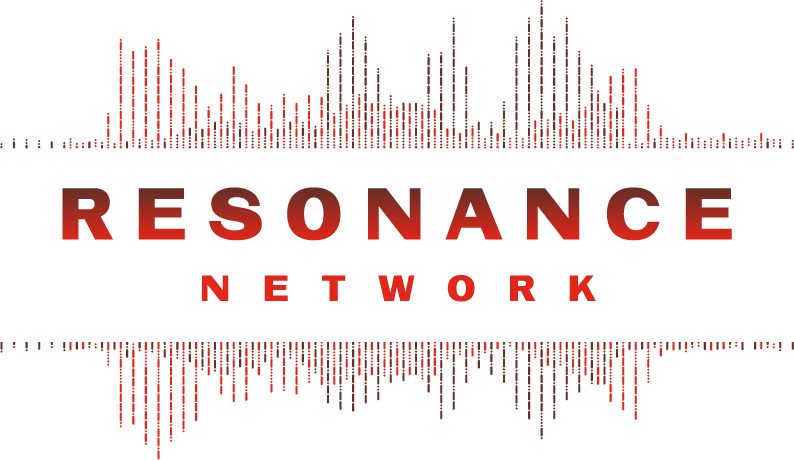
Resonance Network is a national network of people building a world beyond violence.

Network Weaver is dedicated to offering free content to all – in support of equity, justice and transformation for all.
We appreciate your support!
donate in the box above or click here
Reclaiming Care Beyond Roe v. Wade
When the state cannot guarantee our safety, we turn to community as our ancestors did

On June 24, Roe v. Wade was overturned by the Supreme Court after nearly 50 years as precedent.
Weeks before, in response to the leaked decision, Resonance Network hosted ‘We Are Our Own Medicine,’ a gathering grounded in community, storytelling, and ancestral wisdom. Alongside Black and Indigenous healers of various traditions, we came together knowing what our ancestors have known for generations: the state cannot guarantee our safety — it never has.
In the US, incarcerated, disabled, undocumented, poor, queer and trans folks, and survivors have been denied reproductive rights, bodily autonomy, and care for decades. Because this violence lives in our history — and shared reality — we gathered to learn from and share stories from ancestors — past and present — who’ve lived this experience.
In short, when the state cannot guarantee our safety, we turn to community as our ancestors did.
Below is a constellation of wisdom from ‘We Are Our Own Medicine.’
* * *
Deoné Newell — Women’s Empowerment Coach
Deoné is a Navajo/Black entrepreneur, Breathwork Facilitator and Women’s Life Coach. As a woman who hails from the Navajo Reservation (Window Rock, AZ), and has seen the effects of systemic oppression and generational trauma firsthand, Deoné has dedicated herself to making ancestral healing, and its forgotten wisdom accessible to as many BIPOC women as possible.
Karen Culpepper—Clinical Herbalist/Educator
Karen has been a practitioner and bodyworker for over 14 years, focusing her work on intergenerational trauma and its impact on physiology and womb restoration. Her study of cotton root bark as an abortifacient and source of sovereignty for descendants of captured Africans in the US and beyond offers insight into the role of plant spirit healing in the context of political changes.
Qiddist Ashé—Founder, The Womb Room
Qiddist is a medicine woman and female health educator. Informed by her maternal lineage of Ethiopian midwives and her own work in authentic midwifery, functional health, herbalism, somatics, and spiritual sovereignty, Qiddist merges the science and the spirit of female health, orienting to all the ways we can reclaim agency and responsibility for our bodies and our lives.
Camila Barrera Salcedo—Doula/Midwife/Educator
Camila is a mother of 3, doula, midwife, sexuality therapist, and holotropic breathing and fertility therapist. She delves into the unconscious via the physical body to identify blocks that disrupt the evolution and transformation of individuals. She develops workshops to re-establish the feminine consciousness through acceptance and knowledge about the body and its processes.
originally published at The Reverb

Resonance Network is a national network of people building a world beyond violence.

Network Weaver is dedicated to offering free content to all – in support of equity, justice and transformation for all.
We appreciate your support!
donate in the box above or click here
THE TAPESTRY: Weaving Life Stories
You are invited to listen to The Tapestry Podcast.

The podcast is about bringing people together to explore the rich, woven textures of our narratives. Our stories are impactful and in listening to the stories of others, we learn more about our own power, claim our purpose and pursue our passion. The fabric of our lives as women is strong, resilient and when we come together, we can make a beautiful piece of work to inspire, support and sustain our personal and professional lives. Although designed for women 50 and above, the wisdom shared is ageless. Join us as we share, laugh hysterically, cry, and keep it real all at the same time.
Some of The Tapestry's most recent episodes include:

THE STORIES BEHIND THE DATA - Meme Styles
In 2015, Meme Styles founded MEASURE to promote the use of evidence-based projects and tools to tell real-life stories behind the numbers. As a catalyst for systems change, MEASURE has grown to a fully operational nonprofit social enterprise that provides free data support to Powerful Black and Brown-led communities. So far the organization has provided over 3000 free data support hours to Black and Brown - led organizations.
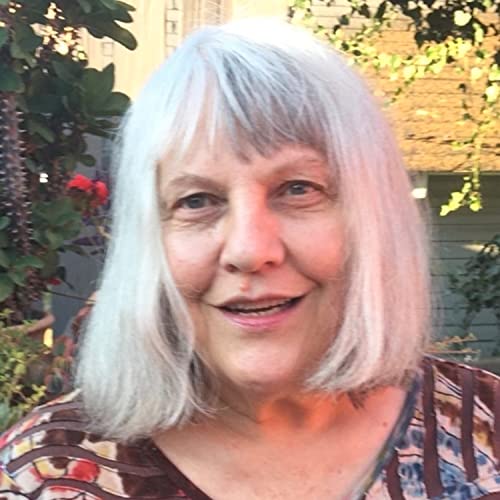
CREATING A PERSONAL NETWORK FOR TRANSFORMATION -- June Holley
June Holley has been weaving networks - and helping other learn to weave networks – for over 40 years. Much that she learned is included in The Network Weaver Handbook, 400 pages of simple activities and resources for Network Weavers. She also created www.dev.networkweaver.com, a site with many free resources and a blog authored by over 40 network weavers.

BOUNDARIES IN BUSINESS AND IN LIFE FOR 2022 - Kimberly Oneil
Kimberly O'Neil is an award-winning professor, executive leader, and social good expert. She was the youngest serving African American woman City Manager in the United States. As a veteran senior government and nonprofit executive, Kimberly has used her voice to impact policy decisions while lobbying in New York City and on Capitol Hill. She now works within the social sector and leads Giving Blueprint, a consulting company with a mission to impact social change through the development of strategic partnerships and growth plans within the social sector.
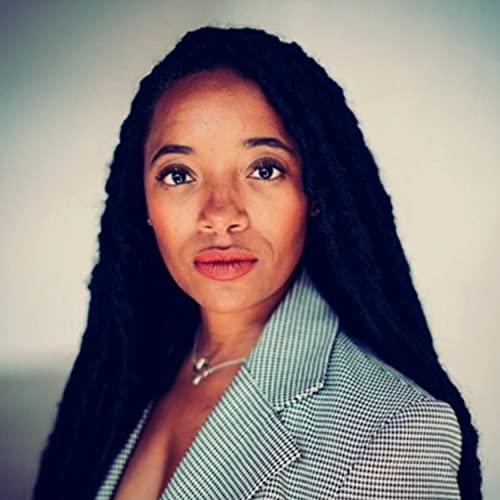
CRITICAL CONVERSATIONS ABOUT RACE - Amber Sims
Amber currently serves as the Executive Director of Young Leaders Strong City, a nonprofit focused on youth development, leadership, and racial equity. She was formerly the Director of Regional Impact for Leadership for Educational Equity, an educational nonprofit focused on leadership pathways in civic engagement. Previously, Amber led workforce development at Workforce Solutions Greater Dallas Opportunity Center. Her theory of change was to emphasize the connection between education, workforce, and dual generation impact.
Other guests have included:
- Dallas Maverick CEO and President Cynt Marshall
- Leah Frazier , 2-Time Emmy Award-Winning and 10-Time ADDY Award-Winning entrepreneur
- Paula Stone Williams, internationally known speaker on issues of gender equity, LGBTQ advocacy, and religious tolerance
- Rafia Zakaria, author of Against White Feminism (W.W. Norton, 2021) and Veil (Bloomsbury, 2017) and a writer for the Guardian, Boston Review, The New Republic, The New York Times Book Review and Al Jazeera America
- Gretchen Bauer, Luxury handbag manufacturer
Find all The Tapestry episodes HERE
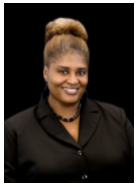
Dr. Froswa’ Booker-Drew is a Partnership Broker. Relational Leadership Junkie. Connector. Author/Speaker/Trainer. Co-Founder, HERitage Giving Circle. Currently, the Vice President of Community Affairs of the State Fair of Texas, she has been quoted and profiled in Forbes, Ozy, Bustle, Huffington Post and other media outlets around the world. In addition, she has been asked to speak on a variety of topics such as social capital and networking, leadership, diversity, and community development to national and international audiences. This included serving as a workshop presenter at the United Nations in 2013 on the Access to Power.
featured image found HERE

Network Weaver is dedicated to offering free content to all – in support of equity, justice and transformation for all.
We appreciate your support!
donate in the box above or click here
Intergenerational Practice and Space
This week, Network Weaver is excited to share a 3-part series by Root. Rise. Pollinate! on fostering connection in virtual space. The series was originally published earlier this year at The Reverb.
How we can create beautiful connections and discoveries across generations.
Posts one and two of this series focused on setting virtual space and intentionally cultivating and sustaining the kind of energy required to be in non-physical space together. In this final post of the series, we center the “who” — the mix of people to invite into and be in space with, especially in light of the isolation that’s come with observing COVID-19 physical distancing safety measures. Here we lift up the beauty, imperative for, and power of intergenerational space.
What’s Possible When Young, Middling, and Elders Come Together?
Dominant narratives (including in organizing) often pit young versus old against each other, and render elders as spent, disposable, or out of touch. Our movements too often sideline both younger and older generations, and seldom do we meet. Yet many of us who’ve sat down for conversation or play with elders or those who are younger than us, including babies, know and relish the beautiful connections and discoveries that we can experience in encounters across generations.
We, present day dwellers of Mother Earth are here because of, and through our ancestors, just as some day our descendants will be here because of and through us.
We learn from and listen to messages from the past in order to seed the future, and we too must draw on and commune with all of us — young, old, and in-between — both human and non-human beings.
As you design your virtual space and identify different community members to share breath, ritual, and movement practices, pay attention to the mix, in terms of age, of who gets to hold space. You could pair the youngest and oldest members of your community to share old or new practices that they create together. Or perhaps you could have an intergenerational mix of people in breakout rooms together for intimate conversations and mutual learning. Importantly for learning and deepening relationship, make space for the virtual community to then share what they have heard from each other, what challenged them, what they are grateful for, and what they would like to cultivate and take beyond the virtual space with them. And remember to invite community members to acknowledge, express appreciations, and create opportunities to continue to connect with each other beyond the virtual space.
These physically distanced times have created an opportunity for us to cultivate and create sacred intergenerational relationships that we rarely get in organizing and “movement” spaces.
As we close out this series of posts, we also share with you the power and connection that comes out of being intentional in how you close your virtual space. The beginning is just as important as the end as the end is in fact another new beginning.
Just as we invited you to open and arrive with ritual and breath practice, we invite you to have in place ways in which you bring your space to close. Options include:
- Inviting community members to share short reflections, gratitude, a song, or a poem
- Physically replicate hugging and sharing an embrace with each other
- Rubbing your hands together to generate heat and move energy, then sharing that out by holding your palms out to community members on the other side of the screen, and then receiving the heat and energy to hug ourselves
We hope you enjoyed this series and would love to hear about other rituals, breath, and movement practices that you’re trying out or have found particularly potent in your own virtual gatherings.
Read post 1 HERE and post 2 HERE
Originally published April 16, 2021 at The Reverb.
Root, Rise, Pollinate! is an experiment that aims to catalyze and nurture a transnational community of feminist human rights advancers, organizers and movement builders using embodied practice for social transformation.
PLEASE DONATE to help Network Weaver continue in it’s mission to offer free support and resources to networks worldwide.
Embodied Practice
This week, Network Weaver is excited to share a 3-part series by Root. Rise. Pollinate! on fostering connection in virtual space. The series was originally published earlier this year at The Reverb.
How to bring movement practice into virtual space to foster connection with our bodies’ wisdom
In our first post we shared the importance of breath practice and ritual for deep connection in virtual space and offered rituals grounded in the elements of air, water, and fire. As we share the next practice on embodiment, we’d like to invite you to consider how all elements, air, water, fire, and earth live within each of us.
How do we embody each element at different times including times of upheaval and possibility for interdependence, deep connection, and love in a rapidly changing world like now?
Embodying The Change We Seek
Movement requires movement. The simple truth of this statement is particularly important during these times of physical separation, especially when we sequester ourselves in our homes and lie or sit in one position for long periods of time. Perhaps we are in front of screens for work or to indulge in whatever’s on offer from the multitude of streaming services that keep popping up.
While this time of COVID-19 is a particular point in our lives, around the world, over time, many of our people have become disembodied as a result of the privilege given to intellectual knowledge and grind culture over more holistic ways of knowing and being. This has led to individual and collective burnout, and even trauma. Even changemakers now ground much of our work in logic models, pages upon pages of strategy, theory, and deep analysis. We lead with our heads, not our hearts and bodies, even though we often already know in our bodies what is most important. In leading with our heads, we lose touch with our bodies sometimes to the point of breakdown and exhaustion.
When we are disembodied, it can be hard for us to tap into what the change we seek would feel like.
If we are disconnected from our bodies, how do we know how and where feelings of joy and inspiration show up in our bodies?
How do we tap into the inner wisdom that tells us when we need to pivot into something more life-giving and sustainable? How well do we connect to the hearts, minds and bodies of ourselves and fellow beings?
Therein lies the importance of body-based work so that as we reconnect with and listen to our bodies, we can draw on and be one with the delicate balance of earth, water, air, and fire that lives within us and is required for the liberated, sustainable, and thriving world that so many of us work tirelessly for.
So how might you bring movement practice into virtual space to foster connection?
You can draw on and invite your community members to share practices that they already know and engage in like somatics, tai ji, and yoga. As you practice, be sure to move with your breath, being conscious about the physical actions you take with each inhale and exhale.
Ultimately, starting virtual gatherings with practices — like (breathing through) movement — can help bring everyone’s bodies, minds, and spirits into alignment, enabling deeper conversations. Starting with and in our bodies allows us to be more present with each other and experience a sense of intimacy, even across distance, time, and experience.
An Invitation
Consider this: how might physical movement coupled with breath support you and your connection to those you care about? Who might you invite to practice with you? Next time we’ll touch on the practice and importance of fostering intergenerational space.
Thank you for continuing to journey with us.
Read post 1 HERE and post 3 HERE.
Originally published March 11, 2021 at The Reverb.
Root, Rise, Pollinate! is an experiment that aims to catalyze and nurture a transnational community of feminist human rights advancers, organizers and movement builders using embodied practice for social transformation.
PLEASE DONATE to help Network Weaver continue in it’s mission to offer free support and resources to networks worldwide.
Taking a Virtual Breath
This week, Network Weaver is excited to share a 3-part series by Root. Rise. Pollinate! on fostering connection in virtual space. The series was originally published earlier this year at The Reverb.
How shared practices can create depth and connection despite physical separation
As we settle into our second year of physical separation wrought by the COVID-19 pandemic, our sense and practice of community and connection is stretched. We continue to maintain physical separation as an act of safety and care for each other for the foreseeable future.
The experience of physical separation is not only an experience between each other, but also within ourselves, as individuals.
If you stop and pay attention for a moment, and look away from your screen, can you locate where your breath currently sits? Is it in your throat, your chest, your belly, somewhere else?
When was the last time you intentionally noticed how your body moves: perhaps danced, stretched luxuriantly, or massaged yourself? When was the last time you listened for birdsong or paid attention to the ground holding you up? Or perhaps the physicality of all this is too much to bear?
In this time, many of us have the opportunity to deepen our practices of care, connection and community, bridging distance across time and space. We still get to support, celebrate, and be with each other albeit in virtual space. We get to be even more aware of why and how we do this.
Practices of connection with self and community are essential for us to harness and nurture the kind of energy needed not only to get us through hardship but also to imagine and bring forth futures of thriving, interdependence, and wholeness.
Over the past year Root. Rise. Pollinate! experimented with how to cultivate care, connection and community with feminist change makers around the world. We are going to share the virtual connection practices we developed in a series of three posts over the next few weeks. These practices were especially meaningful because they helped create a real sense of intimacy, care and depth even though we were separated physically by time, space and the pandemic. This was possible because the practices hinged on building authentic relationships, exchange, and building on each other’s wisdom.
The first post in our series focuses on how to open and set the space through breath practice and ritual. Subsequent posts will focus on embodied practice and intergenerational practice. We hope these offerings support you in this time of continued physical separation.
Setting the Scene: Preparing to be in Virtual Space
Even though we are limited to virtual rooms, it is still possible for us to “set the space” and create conditions for your group to experience authentic connection.
The most important thing is our attention and awareness. Before each session, invite community members to be in — and to the extent possible — protect a comfortable space with few distractions or disruptions for the duration of your time together. As participants arrive, play music whose energy captures how you want the community to feel during and after each session. Also invite community members to be and stay on camera if possible and to let go of any (assumed) judgement of their physical space or appearance. This preparation is particularly important as it creates the opportunity to arrive and stay in space with more ease.
Virtual gatherings make it so we miss out on some of the cues that we’d typically rely on in-person. How do we set and read energy in the ‘room’? What new cues do we need to tune into where body language subtleties are lost? How might we arrive together sans hugs, handshakes, and kisses? We propose setting and entering space with and through breath practice and ritual.
The Power of Breathing Together
Some research findings suggest that choir members, through synchronizing their breath and voices when singing, also synchronize their heartbeats.
This kind of connection, heart to heart, is important when setting energy that fosters connection for community building in virtual space.
Guided breath practice, which lasts for 10–15 minutes allows community members to:
- get out of their heads and release — at least for a little while — from whatever they have been doing or thinking prior to the session, and
- be with their individual breath as part of a collective, breathing organism
This practice may take the form of the group participating in five rounds of a five-breath sequence together, with accompanying physical movement. This works best when one person leads and provides cues for the group.

Breath (and physical movement) Practice
Coupling the breathing with physical movement ensures that community members arrive within themselves, their own bodies, as they arrive with the community as well.
Palms facing up, interlace your fingers just below your belly button.
Inhaling
- As you inhale slowly, move your arms up
- As you get to chest level, rotate your palms (face down then quickly face up again) to allow you to bring your interlaced palms above your head with ease. Pay attention to the sensations in your shoulders. If you have any tightness, lower your arms to the level at which the tightness releases.
Exhaling:
- Turn your upturned interlaced palms to face down
- Slowly exhale as you bring your arms back to just below your belly button. Aim for your exhale to be longer than your inhale
This completes a round of breath.
- Round one: inhale in silence, exhale in silence (five times)
- Round two: inhale in silence, exhale with a hum (five times)
- Round three: inhale in silence, exhaling with one vowel — a (ah), e (eh), i (ee), o (oh), u (oo) — on each breath
- Round four: inhaling in silence, exhaling with a hum (five times)
- Round five: inhaling in silence, exhaling in silence (five times)
Arrival breath-work is about opening and holding space for community members’ hearts to connect and beat as one in preparation for whatever conversations or work that lies ahead.
Once the community is breathing as one, then you can move into shared ritual in order to continue to deepen connection.
Ritual: Setting Space and Coming to Center Together
Rituals have long been part of human existence across different cultures bringing community together in times of joy and celebration, in times of grief and mourning, to commune with the spirit realm, to assuage anxiety or prepare us for big undertakings — to get us through life. In an ever-busy world, where many peoples have lost touch with ritual, particularly communal rituals, the slowing down, the great pause brought on by COVID-19 created an opportunity to practice and reëngage with, or perhaps create new rituals.
We rooted in rituals and conscious practices to bring the group together in a focused, energized way. In light of the COVID-19 pandemic, rituals for self-care and healing are essential as are rituals and practices that deepen our sense of spirit-rootedness and collective thriving. Rituals may be rooted in a tradition or culture, or be co-created in groups. Below we share two rituals around water and fire.
Creating a Community Water Font
Tewa elder, Kathy Sanchez from San Ildefonso Pueblo in New Mexico modified an in-person water ritual for virtual space, inviting the community to acknowledge, honor, and commune with water as a life-giving and life sustaining source.
Invite community members to bring water into space in a ceramic, earthenware, or similar vessel forged from living material.
Participants name the source of their water — river, stream, watershed, etc. and share reflections on water in their lives including how it heals and lives in and through each community member. Community members then imagine pouring, and therefore mixing their water, into a vessel where many waters flow as one.
Building a Communal Fire
Invite community members to bring a candle and matches or lighter into space. At a designated time, those leading the space invite community members to each light their candles and share their internal wisdom about how this element — and indeed all elements — show up in our external and internal lives as life-giving and sometimes destructive forces as we build towards thriving communities and futures.
Rituals such as these enable community members to thoughtfully bring their individual experience into the community as part of building a collective ritual, which they can carry beyond virtual space.
An Invitation
As we close out this post, we invite you to practice some of what we’ve shared — perhaps first with yourself, and then with a friend or colleague. You can begin by just taking one breath, consciously inhaling and then exhaling. Consider, what difference might it make to our collective futures if we regularly synchronized our heartbeats? Stay tuned for the next offering on embodied practice.
Read post 2 HERE and post 3 HERE.
Originally published March 4, 2021 at The Reverb.
Root, Rise, Pollinate! is an experiment that aims to catalyze and nurture a transnational community of feminist human rights advancers, organizers and movement builders using embodied practice for social transformation.
PLEASE DONATE to help Network Weaver continue in it’s mission to offer free support and resources to networks worldwide.
How to Reduce Stress and Increase Learning: The Power of Professional Networks During COVID

“I am a nervous wreck, I am way behind on my fundraising, my staff is not getting along, I don’t know how to support them, I lost a major donor, and I feel so alone,” said Aron, an Executive Director of a nonprofit, a few months into COVID.
After almost eight months of the pandemic, leaders like Aron continue to face shifting contexts and ongoing stresses as they try to move into the new normal. Never before have leaders of Jewish organizations had to address questions like making working spaces safe from COVID and working entirely virtually. It’s lonely at the top anyway, but facing challenges further isolates leaders. “I must be the only one to experience this,” they think and therefore hesitate to share struggles with others, who could help. At this juncture in our communal lives, and as the Jewish Federations of North America 2020 General Assembly convenes virtually this week, we see professional networks are critically important to support leaders.
As Bill Gates writes, when tackling a big challenge he begins by asking, “who has dealt with this problem well? And what can we learn from them?” As guides and facilitators to groups of leaders – Ziva organizes leadership development cohorts and Naava guides Communities of Practice – we see the power of networks for leaders in both the Jewish and non-Jewish sectors. Peer support offers leaders practical insights as well as inspiration and hope, through seeing the successes, failures, and resilience of others. Therefore, a combination of peer community and access to an ongoing flow of information and solutions provides leaders with what they need to face the dynamic and ongoing challenges that COVID presents. Aron, for example, had a network but he had not used them much before. They had monthly webinars that provide interesting case studies. But that’s about it. And, while it’s tempting to hope that information is enough to address leaders’ needs, there are a few key pitfalls in that approach.
Overcoming the Challenges of Stress and Isolation
We are learning from new market research by the Schusterman and Jim Joseph Foundations that the key to successful virtual events for young Jewish adults is to provide community and connection before content. We argue that for leaders and other professionals, a similar approach applies.
So much of today’s pandemic challenges are outside of leaders’ lived experience, with a learning curve compounded by a paucity of best practices and continually changing guidelines. Supporting leaders must begin by attending to the human, the need for connection, and the emotional needs of leaders. Attending to the emotional is not a touchy-feely aspiration; stress is real and has a physiological basis. Stress causes the body to release cortisol, which inhibits the brain’s ability to proliferate dendrites and create new circuits. In other words, stress inhibits the brain’s ability to learn. So, to unlock learning, begin by addressing the human elements.
Research on professional learning shows the most powerful professional learning occurs in the context of work itself and solutions come from ongoing access to and informal conversations with peers. Only a peer understands the depth of what it means to stand in those shoes and has the shared language to describe it. Being able to reach out to the right person at the right time can be invaluable. In our experience, leaders are expressing a hunger to speak with each other about how they are handling COVID related challenges. And, thanks to Zoom, Teams, Meet, and more, we have unprecedented opportunities to bring people together.
By bringing people together, we give Aron a space where he feels understood, sees others dealing with similar challenges. His stress levels drop, unlocking his capacity to learn. But from whom? There are no experts on leadership in times of a pandemic. Aron and his peers need to co-create their knowledge together, writing the playbook themselves. Our own experience shows – and research validates – that participants in a well-facilitated networked model of learning can – in close to real-time – identify emerging challenges, deal with complexity, learn from experiments, share resources, create and spread innovation, and move a field forward.
Following, are a few success stories about ways the pandemic is providing new opportunities for organizations and individuals to find peers. We also share tips about how gathering differently can create stronger outcomes.
Find Your People
Example: Prizmah: Center for Jewish Day Schools
When COVID hit, Jewish day school professionals serving in nine different roles – ranging from Jewish studies teachers to school counselors – reached out to Prizmah, the network for Jewish day schools across North America, to support them in convening. Prizmah used their existing infrastructure to form these new online communities, including professionals they had not previously convened, like the gym teachers who were suddenly faced with offering online gym class.
As an organization dedicated to connecting people with peers, experts, and resources, Prizmah already had monthly facilitated peer-to-peer gatherings for heads of school from across North America. At the start of COVID, heads of school requested more frequent time together and shifted to meeting weekly to get the support they needed. The nine new online communities found support through Prizmah, who had the infrastructure and staff in place to transition immediately to gathering more often with more groups. By listening to network members and building on their network of resources, Prizmah was able to serve a timely and critical need.
Networks are a Long Term Strategy
As illustrated by Prizmah, networks are a long term sustainable strategy. As Debra Shaffer Seeman, Prizmah’s Director of Network Weaving describes, “Investing in relationships makes all the difference. During periods when time is of the essence, pre-existing relationships allow for open sharing, trusted feedback, and quick input without the need for formal introductions or starting from scratch. Once a trusting relationship is formed, it is there to be easily activated when the necessity arises.”
Gather Differently
Once you have found your people, we believe the realities of COVID require thinking differently about gathering. The goals of gathering in many professional development contexts have been focused on knowledge transfer, bringing in guest experts, or sharing case studies. We argue that during COVID, professional gatherings should provide space and opportunities for social and emotional support as well as stimulating learning and we provide an illustration and resources below. In addition, with the right facilitation and convening strategies, we see significant upside potential to stimulate innovation and catalyze collective impact.
We understand there is significant resistance to group time and energy focused on the ‘touchy-feely stuff’ of relationship building. Yet, profound learning occurs when professionals feel safe enough to ask questions, reveal their vulnerabilities, and explore what they do not know. Gathering differently means balancing a group’s intellectual growth with growing the relational underpinnings and trust that support network members.
Example: New England Hemophilia Association (NEHA)
Before COVID, NEHA had run in-person sessions for members with a format of the guest expert followed by Q & A. With the start of COVID, Sarah Shinkman, NEHA’s Program Director, realized there was a need for something more and started experimenting with Zoom breakout rooms. Sarah explained, “Breakouts in Zoom let attendees see each other, see facial expressions, and have stronger connections. The discussion becomes more meaningful, intentional, people are inclined to share more about their experience because they feel the energy, emotions, and connections from each other. It allows people to be more vulnerable.” Sarah’s insight and responsiveness increased her members’ learning, as well as their confidence in the support offered by the network.
Gathering Differently Requires Excellent Design and Facilitation
Excellent facilitation is essential for a strong network. Unlike a hierarchy that has a clear chain of command, we believe partnering with a network is best accomplished through facilitation. A facilitative stance allows the creativity and out of the box thinking of a group to emerge.
We recommend conveners build their facilitative muscles by undergoing training and watching master facilitators at work to continuously expand their repertoires. In the example above, COVID motivated a simple tweak in gathering – breakout rooms – that enabled more sparks of connection and intimacy, enriching and deepening network connections thereby creating social and emotional support for participants.
TIP: We recommend systematically using breakout rooms after a presentation to help participants synthesize what they heard, hear other perspectives on the topic, and think about how to apply what they learned to their own experience.
Resources for Gathering Differently
The new zoom client, released in late September, has an option that allows attendees to move across breakout rooms on their own creating many new and exciting formats ranging from a virtual cocktail party (Rae Ringel) to Open Space.
Other resources we have found to be useful in gathering differently include:
- Troika Consulting from Liberating Structures – In quick round-robin “consultations,” individuals ask for help and get advice immediately from two others via peer-to-peer coaching triads. The virtual hack is to turn off your video instead of turning your chair around (Tanja Sarett). [ap_spacing spacing_height="10px"]
- Upstart’s Guide to Facilitating in the Virtual World is a comprehensive guide focused on tools for meetings of 30 people or less. [ap_spacing spacing_height="10px"]
- Using Jamboard for Network Mapping by June Holley uses Google’s virtual post-it note board, to help members get to know each other and find their common interests. [ap_spacing spacing_height="10px"]
- Virtual Gathering In The Time Of Corona, Priya Parker’s introduction to virtual gathering, includes creative ideas for simulating pre-event mingling with Zoom meetings and other basic concepts. [ap_spacing spacing_height="10px"]
- Engaging People with Lived Experience Toolkit and Facilitating Meetings with People with Lived Experience of Inequity from 100 Million Healthier Lives, hosted by Community Commons. This toolkit aims to create flexible, deeply collaborative strategies for a diverse group, enabling a plurality of voices to be heard and contribute.
Conclusion
This is a time that calls for learning together. After speaking with Naava, Aron reached out to his umbrella organization and reached out to his peer network. When we last spoke with Aron, instead of feeling overwhelmed and isolated, he felt supported, engaging with his network (and other supports) and knowing that his network was there for him.
* Aron’s name has been changed to protect his privacy.
Do you have a story of gathering differently in the pandemic? Learning differently? We want to hear it!
originally published at ejewishphilanthropy.com
About the Authors
Naava Frank (naavalfrank@gmail.com) is Institutional Giving Manager at Honeymoon Israel and leads the Network of Network Leaders – an initiative founded by Cyd Weissman of Reconstructionist Rabbinical College that brings network facilitators together for support and to learn from each other. As Director of Naava Frank LLC/Knowledge Communities, Naava has devoted her career to enabling nonprofit organizations to maximize the outcomes of Communities of Practice. Naava lives in Riverdale, the Bronx, New York.
Ziva Mann is the Director of Learning and Development at Ascent Leadership Networks, where she helps leaders understand their capabilities, and guides development for individuals and organizations. Ziva is also faculty at the Institute for Healthcare Improvement for the 100 Million Healthier Lives initiative (100mlives.org), working with a network of change leaders to improve equity, health, and wellbeing. She is also the director of ZMM Consulting, LLC. Ziva lives in Massachusetts with her husband and sons.




